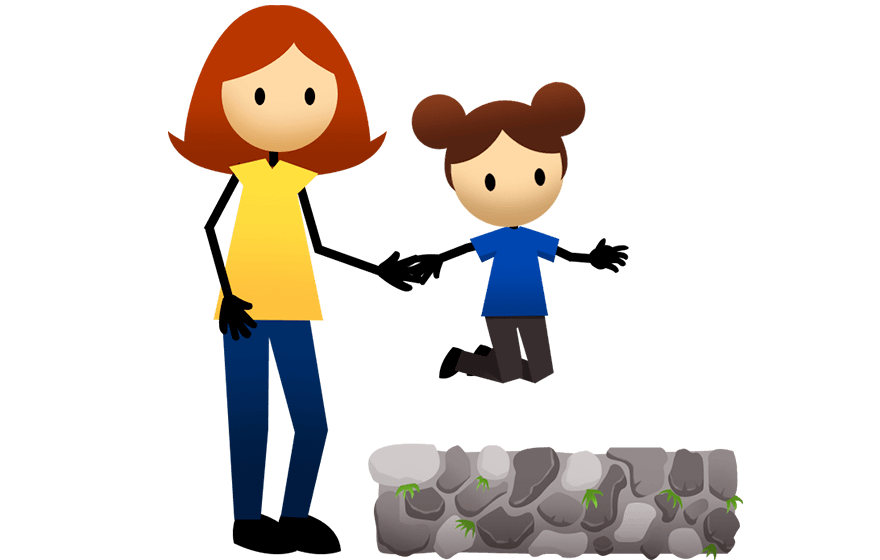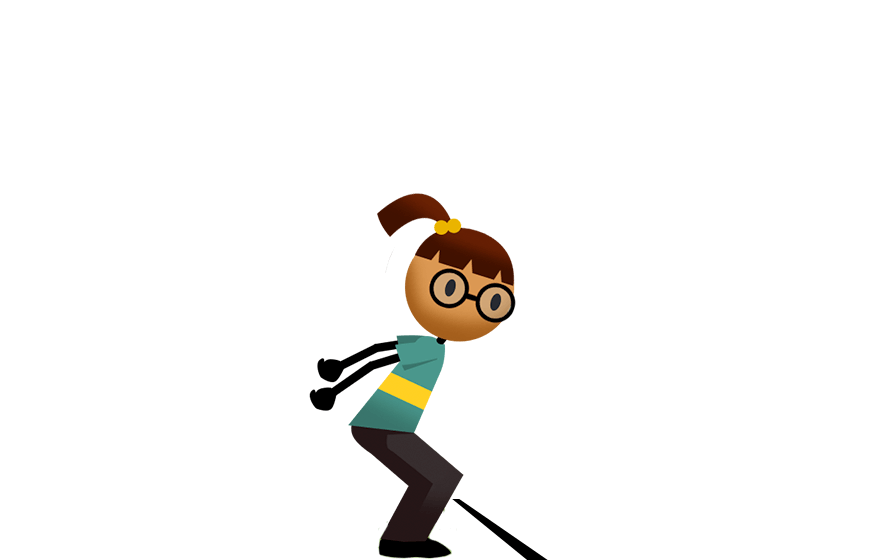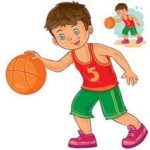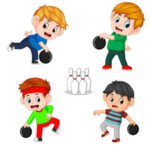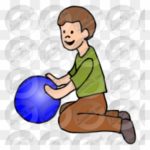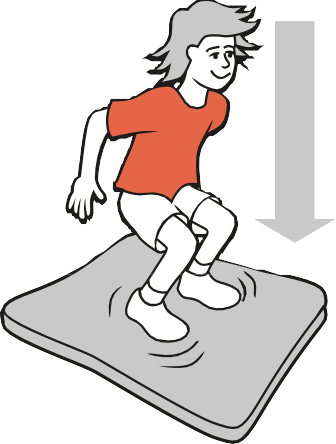
by Santosh | Jun 11, 2020 | Fitness Activity
Movement skills/concepts
Jumping, landing and balancing, space awareness (levels and directions) and relationships (with equipment).
Set-up
Ropes and bases/discs.
Children are spread out, with one rope and one base/disc each, in a level grass or hard area.
Activity
Can you …?
- stand on your base and, on the signal, try to jump (high to give you more time in the air) and click your heels together before you land – how many clicks can you do before landing and can you land on your base?
- jump from your base and see how many times you can clap your hands together before you land – as your feet touch the ground, freeze your body, perfectly still and stay in that position for three seconds
- jump over a rope and land on the other side without falling down – think of your feet sinking into the floor as if the floor were a sponge and freeze in that position for three seconds
- jump over your rope in different ways – try to take off on one foot and land on two
- change the direction of your jump to land – jump forwards, backwards, sideways
- jump high in the air as you travel over your rope and land as softly as you can – freeze and hold for three seconds
- jog, run, skip, gallop, hop, etc and, on the signal, jump to land – freeze and hold for three seconds
Can you see …?
- toe–ball–heel landing sequence
- knees bending after heels contact the ground
- straight back
- holding or ‘stick’ balance
- head up, looking straight ahead
You could ask …
Which ways of jumping did you enjoy the best?
What position did you hold when you landed on your feet?
Why do you need to hold this position for at least three seconds?
Variations
Vary object: Jump over different objects (e.g. beanbags, balls, low-level box tops, benches).
COOL DOWN/ CLOSURE
Review Skill/Activity, stretching, and questions.

by Neetu | May 29, 2020 | Fitness Activity
Movement skills/concepts
Jumping for distance, in varying directions and levels, creative ways, and with others.
Set-up
Children are spread out in a defined grass or hard surface area.
Activity
Who can jump …? (or Can you jump …?)
- as quietly/loudly as possible
- forwards/backward
- from a small crouch
- very fast/slow
- in a straight line
- like a giant/frog
- as if you are on ice
- making a circle
- with a partner
- with legs and arms stiff
- keeping your arms out from your side
- with your legs apart
- and land with your feet apart
Variations
Add stationary objects: Can you jump … over a box, across a rope, through a hoop?
Combine actions: Can you jump quietly while making an ‘O’ shape?
Jump your own height: Measure your height on the ground using a marker. Try jumping in different ways to reach your height.

by Neetu | May 25, 2020 | Fitness Activity
Aim
Learn how a “kangaroo” looks like when it is jumping and sitting on the ground.
Equipment Required
- Four cones for boundaries (same color).
- Spot marker for every kid.
- Music Player & pen drive.
- Skill Cards of kangaroo jump
Play Area Set-Up
Layout letter cards over a large area. Show students the area around the cards where they will be walking/running and other locomotor skills.
Activity 1: Kangaroo tag
- Demonstrate to children what a “kangaroo” looks like when it is jumping and what it might look like when it is still.
- Have all children stand up and show you their “kangaroo” jumping.
- Explain that the children will play a game called “kangaroo tag”.
- If you get tagged you must jump on the spot like a kangaroo until someone comes and “high fives” you.
- Ask children to spread out around the activity space.
- Choose 1 or 2 children to be “it”.
- When I start the music, the game begins. If I stop the music, everyone has to freeze like a kangaroo.
- Change who is “it” every 60 seconds
- Participate in yourself to provide an example for children who might need help.
Activity 2: Spot Jumping
Prerequisites – Students should understand the difference between a two-foot take-off (jump) and using one foot (hop).
- Students are scattered about the desired area.
- Each child begins the activity by standing on a spot.
- The teacher tells the students to move around the general space while using a certain locomotor skill when the music begins. (Walking is a good method to use at first to control the speed of movement in general space.) When the music stops, the students will stand on the closest spot.
- At this time, the instructor gives them a jumping or hopping task to perform. After about 15 seconds, begin the music again. Be sure to reinforce which type of locomotor movement the students may use during the music time.
Examples of jumping/hopping tasks:
1) Jump on and off the spot.
2) Hop on and off the spot.
3) Jump side to side over the spot.
4) Hop around the spot.
5) Jump forward and backward over the spot.
6) Hop around the spot.
7) Straddle jump the spot. (Both feet on, and both feet off.)
8) In a straddle position, jump side-to-side changing which foot lands on the spot.
9) Jump up in the air in a straddle jump and land with both feet on the spot.

by Rashmi Sharma | Apr 18, 2020 | Fitness Activity
Requirements
• Outdoor space with natural and man-made obstacles
• Playground equipment may be suitable
• Sidewalks, benches and low garden walls are good
Instructions
- When walking outside with your toddler, find simple structures such as park benches and low garden walls 30-50cm high.
- Encourage your toddler to climb onto these low structures and jump down.
- Hold your toddler’s hands at all times.
Variations
• Show your toddler how to jump over cracks in the sidewalk, garden hoses on the ground, etc.
Benefits
This activity develops dynamic balance and coordination required for any and all sports and activities that involve jumping and landing (e.g., basketball, baseball, soccer, volleyball, track and field, gymnastics).
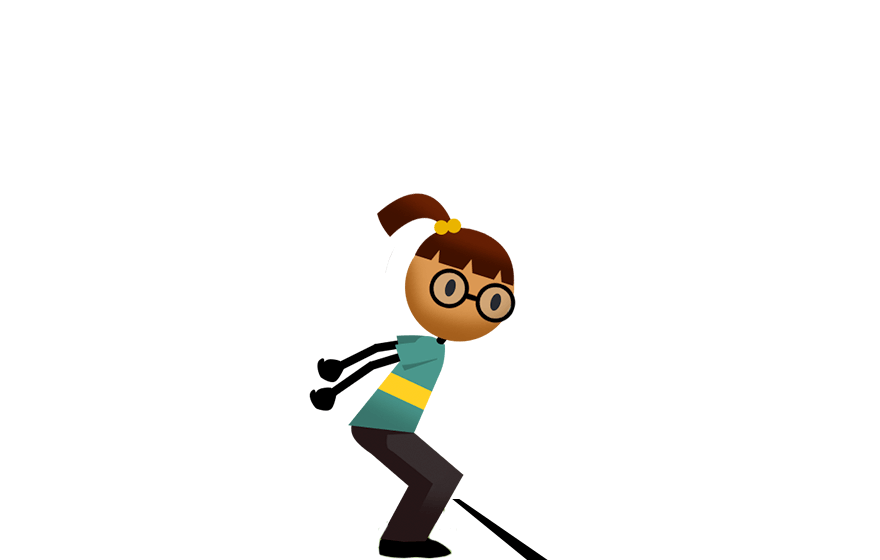
by Rashmi Sharma | Apr 18, 2020 | Fitness Activity
Requirements
- Open space
- Markers (chalk, ribbon, etc.)
Instructions
- In an open space, find or create a line on the ground.
- Have your child stand behind the line, feet together, with toes touching the line.
- Show your child how to jump, bending at knees, bent arms reaching downwards and back, and then throwing arms upwards as you spring forward with feet together.
- Mark the landing spot for each jump.
- Challenge your child to beat your jump.
- Challenge your child to beat their own jump.TIP: Show how to land with feet shoulder-width apart, and knees aligned above feet.
Variations
- Challenge your child to jump with one foot only
- Try fun scenarios – for example, pretend to be Spiderman leaping between buildings
Benefits
This activity develops dynamic balance, coordination, and strength required for any and all sports and activities that involve jumping (e.g., basketball, baseball, soccer, volleyball, track and field, gymnastics, diving).




